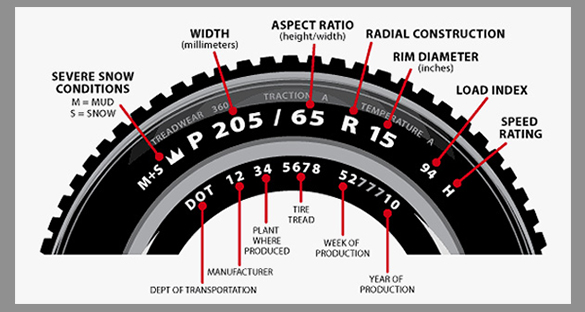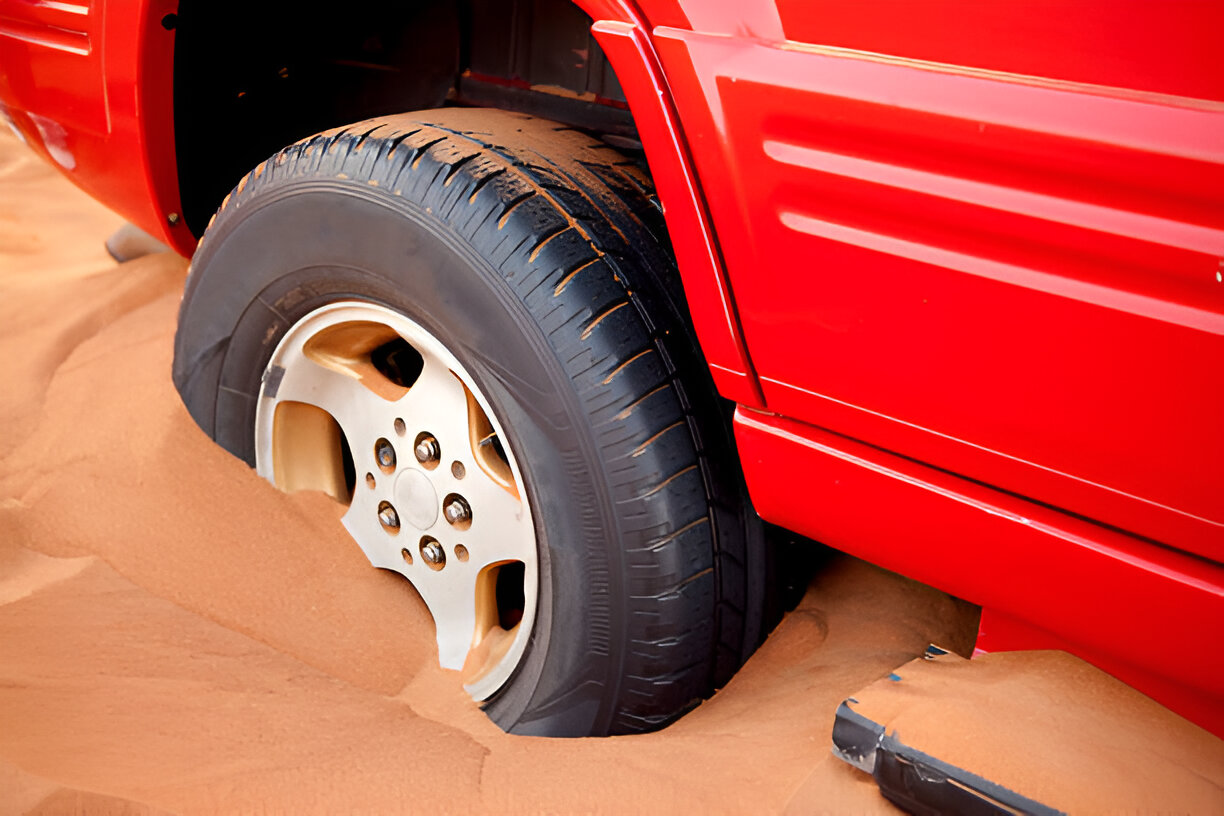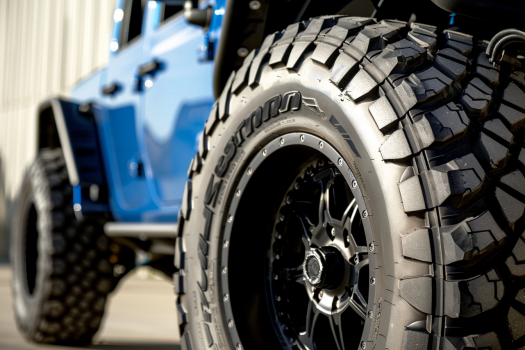Last Updated on January 13, 2025
Tire Speed Rating: Understanding What It Means and Why It Matters
The tire marking world can sometimes be confusing since it appears very coded — many numbers and letters without much explanation. Despite the randomness of these letters and numbers, they actually serve an important purpose and can make an enormous difference in performance and handling. So far, we have discussed the importance and meaning of DOT markings (the age of your tires) and load index (load handling). Today, we will explore tire speed ratings, why they matter, and the full code breakdown.
What Is A Tire Speed Rating?
A tire speed rating is an alphanumeric symbol assigned to a tire that indicates the maximum speed it can safely sustain over time. While modern vehicles are often equipped with speed-rated tires, understanding these ratings can help you select the right tire based on your driving habits and conditions.
Tire speed ratings are generally listed on the tire sidewall alongside other important information like tire size and load index. For example, a tire marked with “P225/60R16 95H” has a speed rating of “H,” which corresponds to a maximum speed of 130 mph (210 km/h).
Why Tire Speed Ratings Matter
It plays a crucial role in your vehicle’s safety, handling, and performance. You might ask why the speed rating is necessary when the average speed limit in the USA is less than 70 mph. However, choosing car tires with the correct speed rating ensures they can withstand the heat and stress generated at specific speeds. If tires with a lower rating are driven at high speeds, they will likely overheat, leading to premature wear, reduced traction, or catastrophic tire failure.
Speed ratings are also important for legal and warranty reasons. Many tire manufacturers provide warranties based on the proper use of speed-rated tires. If you install a lower-rated tire than recommended, you may void the warranty or fail to meet your vehicle’s legal requirements. Buying tires with a speed rating based on the manufacturer’s recommendation is in your best interest.
List Of Tire Speed Rating Codes
Did you know that tires have over 20 different speed ratings for tires? Some are used for specialized vehicles, like construction equipment or farm vehicles, but most are for regular vehicles used on public roads.
A8:
- Speed: 3 mph (5 km/h) to 25 mph (40 km/h)
- Use Case: Special-purpose vehicles like agricultural tractors, earthmovers, or trailers.
- Explanation: These ratings are for slow-moving vehicles that require high durability and load-carrying capacity rather than speed performance.
B:
- Speed: 31 mph (50 km/h)
- Use Case: All-terrain vehicles (ATVs) or off-road machinery.
- Explanation: Primarily for vehicles that don’t travel on highways but need rugged tire performance.
C:
- Speed: 37 mph (60 km/h)
- Use Case: Heavy-duty vehicles, often on commercial or industrial machinery.
- Explanation: Designed for stability and load-carrying capacity over moderate speeds.
D:
- Speed: 40 mph (65 km/h)
- Use Case: Similar to “C” rating but can handle slightly faster speeds.
- Explanation: Used on heavier vehicles that don’t prioritize speed.
E:
- Speed: 43 mph (70 km/h)
- Use Case: Specialty commercial vehicles or trailers.
- Explanation: Supports heavy loads while maintaining moderate speeds.
F:
- Speed: 50 mph (80 km/h)
- Use Case: Off-road or specialty vehicles.
- Explanation: Often found on military or emergency vehicles.
G:
- Speed: 56 mph (90 km/h)
- Use Case: Specific for high-load or specialized applications.
- Explanation: Provides enhanced durability at moderate speeds.
J:
- Speed: 62 mph (100 km/h)
- Use Case: Limited highway use, such as on trailers or industrial trucks.
- Explanation: Rarely seen on regular consumer vehicles.
K:
- Speed: 68 mph (110 km/h)
- Use Case: Low-speed commercial or industrial use.
- Explanation: Not typical for passenger vehicles.
L:
- Speed: 75 mph (120 km/h)
- Use Case: Older vehicles or off-road machines.
- Explanation: It is still occasionally used on trailers.
M:
- Speed: 81 mph (130 km/h)
- Use Case: Light trucks or some trailers.
- Explanation: Rare in passenger vehicles.
N:
- Speed: 87 mph (140 km/h)
- Use Case: Rare, occasionally seen in special-purpose vehicles.
- Explanation: Higher speed than M but still infrequent in consumer cars.
P:
- Speed: 93 mph (150 km/h)
- Use Case: Light-duty trucks or SUVs.
- Explanation: It is seen in light trucks and older models.
Q:
- Speed: 99 mph (160 km/h)
- Use Case: Winter tires for cars and SUVs.
- Explanation: Winter tires often have a lower speed rating due to their unique tread compounds designed for cold-weather performance.
R:
- Speed: 106 mph (170 km/h)
- Use Case: Light trucks, SUVs, off-road tires.
- Explanation: Durable for off-road use but capable of moderate highway speeds.
S:
- Speed: 112 mph (180 km/h)
- Use Case: Family sedans and light trucks.
- Explanation: A common speed rating for standard passenger cars.
T:
- Speed: 118 mph (190 km/h)
- Use Case: Family cars, minivans, and light trucks.
- Explanation: Popular for all-season tires on daily commuter vehicles.
U:
- Speed: 124 mph (200 km/h)
- Use Case: Sports sedans or coupes.
- Explanation: Typically found on vehicles designed for sportier performance.
H:
- Speed: 130 mph (210 km/h)
- Use Case: High-performance sedans and sports cars.
- Explanation: Balances performance and longevity, making it common for premium vehicles.
V:
- Speed: 149 mph (240 km/h)
- Use Case: Sports cars and performance-oriented sedans.
- Explanation: High-speed capability with good handling characteristics.
W:
- Speed: 168 mph (270 km/h)
- Use Case: High-performance sports cars.
- Explanation: Often used in summer tires or ultra-high-performance tires.
Y:
- Speed: 186 mph (300 km/h)
- Use Case: Exotic supercars.
- Explanation: Designed for vehicles capable of very high speeds and superior handling.
(Y):
- Speed: Over 186 mph (300 km/h)
- Use Case: Ultra-high-performance supercars.
- Explanation: Some extreme-performance vehicles require tires rated for speeds over 186 mph, indicated by the “(Y)” symbol in parentheses.

Conclusion
Understanding tire speed ratings is one of the most important steps in optimizing safety features, maintaining your vehicle’s performance, and preventing unnecessary wear. These ratings provide a guideline for the maximum speed a tire can safely handle, and choosing the right one ensures your vehicle can properly perform.
Always check your vehicle’s manual and consider your driving habits—whether on high-speed highways or generally slow, daily commutes. In the long run, this small but crucial choice will ensure your safety, overall handling, and longevity.
-
Automotive Specialist
-
Proofreader
-
Writer










 English
English Français
Français Español
Español